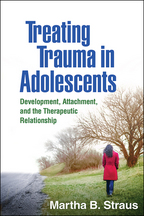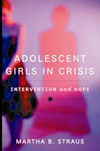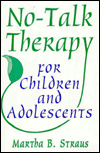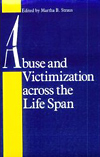Recent Books
- Cool, Calm & Connected: A Workbook for Parents and Children to Co-regulate, Manage Big Emotions & Build Stronger Bonds
- The Lost Art of Listening (3rd ed): How Learning to Listen Can Improve Relationships
Other Books
 TREATING TRAUMA IN ADOLESCENTS
TREATING TRAUMA IN ADOLESCENTS
Development, Attachment, and the Therapeutic Relationship
Martha B. Straus
(Pre-order now and save 20% off the retail price by purchasing from Guilford Press.)
An Interview with Martha Straus
“This beautifully crafted book weaves together attachment theory, neurobiology, and adolescent development with the author’s years of masterful practice as an individual and family therapist. The case descriptions of traumatized, hard-to-reach teens are page-turners, and draw the curtain back on how to use language and the therapeutic relationship to connect and heal when there has been abuse, loss, and rupture. Straus combines the language of a gifted storyteller with the erudition of a scholar. A beginning therapist will find comfort and inspiration in Straus’s generous sharing of her own work, and the most seasoned therapist will feel enlivened and enriched as well.”
—Anne K. Fishel, PhD, Director, Family and Couples Therapy Program
Massachusetts General Hospital; Department of Psychiatry, Harvard Medical School
“Straus gives us the rare treat of inviting us into her therapy room to be witness to the authentic, reciprocal, intimate relationships with her teen clients that are the fabric of healing in her relational model of treatment. This book brings the attachment literature to life in a new way and helps therapists understand their own relational strengths and weaknesses. Case examples of teens with varying attachment styles show how building a therapeutic relationship, over time, can integrate the self and overcome the disruptions caused by early trauma. I found the cases moving, the theoretical analysis enlightening, and the modeling of a warm, honest, related, and constantly struggling therapeutic stance a beautiful example to emulate.”
—Joyanna Silberg, PhD, Senior Child Trauma Consultant, Sheppard Pratt Health System;
President, Leadership Council on Child Abuse and Interpersonal Violence
“Rarely in our field does one find a voice so research-anchored, clinically precise, and utterly human at the same time. Straus demonstrates how to consistently ‘show up’—to maintain a therapeutic connection when struggling with real kids, real therapy, and real trauma. The accessibility of her teaching is remarkable, making the book relevant to both trainees and deeply experienced clinicians. In a therapeutic landscape divided between protocol-driven and vague eclectic approaches, this book ‘holds the center,’ where most therapists and adolescents fitfully live with each other. Straus’s approach can restore health to kids frozen by life events, in ways that will open the hearts of therapists as well.”
—Ron Taffel, PhD, Chair, and Founding Director of Family and Couples Treatment Services,
Institute for Contemporary Psychotherapy, New York City
“Straus provides a comprehensive description of her psychotherapy model for adolescents, as well as a glimpse of the creative therapist who developed it. She thoroughly presents the core principles of her approach, which rests soundly on theory and research. The many case presentations attest to the importance of developing, maintaining, and continuously repairing connections with adolescents in order to help them resolve attachment trauma and develop an integrated self. This book will find a place in the frequently-referred-to section of the bookcases of both beginning and experienced therapists who have the privilege of entering the lives of these isolated young people.”
—Daniel Hughes, PhD, private practice, Annville, Pennsylvania
This book presents an innovative and empathic approach to working with traumatized teens. It offers strategies for getting through to high-risk adolescents and for building a strong attachment relationship that can help get development back on track. Martha B. Straus draws on extensive clinical experience as well as cutting-edge research on attachment, developmental trauma, and interpersonal neurobiology. Vivid case material shows how to engage challenging or reluctant clients, implement interventions that foster self-regulation and an integrated sense of identity, and tap into both the teen’s and the therapist’s moment-to-moment emotional experience. Essential topics include ways to involve parents and other caregivers in treatment.
Find full information about this title online: www.guilford.com/p/straus
 Millions of adolescent girls today are in a crisis of rage and despair. They disappear through starvation, get pregnant, run away from home, self-mutilate, attempt suicide, and abuse drugs and alcohol. Less severe but equally troubling, many hide weeping in their rooms, bully and endure bullying, feel afraid, lonely, and unloved. Perhaps the most troubling aspect of this crisis is that adults—parents, researchers, teachers, therapists, the very people who care about adolescent girls—have remarkably little insight into just how they feel, how they spend their days, how they are facing this crisis of rage and despair, and what they are doing to cope
Millions of adolescent girls today are in a crisis of rage and despair. They disappear through starvation, get pregnant, run away from home, self-mutilate, attempt suicide, and abuse drugs and alcohol. Less severe but equally troubling, many hide weeping in their rooms, bully and endure bullying, feel afraid, lonely, and unloved. Perhaps the most troubling aspect of this crisis is that adults—parents, researchers, teachers, therapists, the very people who care about adolescent girls—have remarkably little insight into just how they feel, how they spend their days, how they are facing this crisis of rage and despair, and what they are doing to cope
Programs, experts, and interventions abound, with seemingly little impact on the collective distress of adolescent girls. For every success in turning a troubled girl around, there seem to be new, even sadder cases to take its place. As veteran clinician Martha Straus explains, the list of reasons for our failure are complicated and varied, much like the girls themselves: weak, fragmented interventions; overwhelmed institutions with inadequate resources; unaware, busy parents; overcrowded schools; riskier-than-ever experimentation; an increasingly violence-saturated society; marginalization of girls in the press and on the Internet; a backlash against feminism—the list could go on.
With 25 years of clinical experience treating this challenging population—and several more years of personal experience raising her own two teenage daughters—Straus writes from the trenches, delving into the world of adolescent girls, setting the record straight on what’s going on, and providing clinicians and caregivers with better information and real, effective strategies to help.
Adolescent Girls in Crisis begins by exploring what Straus terms “the culture of rage and despair”—the insidious ingredients that can lead to disturbed behavior and feelings, including stress, sadness, anger, aggression, self-doubt, defiance, and anxiety. By examining the adolescent passage, the role of consumerism and the media, developmental stages, and aspects of school and home life, Straus lays the groundwork for the practical interventions presented in the second half of the book. Targeting specific problematic behaviors—affective and anxiety disorders; eating disorders and self-mutilation; attachment and trauma problems; ADHD and oppositional-defiant disorder; sex and conduct disorders, and substance abuse—Straus goes on to provide concrete strategies and treatment methods for helping girls overcome their distress and climb out of crisis. Additional chapters on drug treatment, hospitalizations, and other out-of-home interventions are also covered.
Adolescent girls face more hurdles to healthy, safe development than ever before, with greater-than-ever risks. Though they need us know more than ever, taking on the responsibility of helping them is unarguably challenging and frightening. However, as reflected in Straus’s final chapter, “Ten Reasons for Hope,” we are in the midst of important changes in how we understand girls, adolescence, the life course, and the impact of culture. Highly practical and compassionate, Adolescent Girls in Crisis guides us in this understanding, showing us how to make effective, lasting changes in lives of our teenage girls.
“Martha Straus has done an incomparable service with this seminal work. From describing the social, everyday aspects of contemporary girl life, to exploring the specifics of what actually matters when treating teen girls, to untangling the confusions of modern diagnosis—Straus goes for it all. With clarity and compassion, she writes to clinicians at all levels of sophistication. If you want to know how to understand and handle adolescent girls today, this is the one book you should read.”—Ron Taffel, Ph.D., author of Breaking Through to Teens: Psychotherapy for the New Adolescence
“Adolescent Girls in Crisis is a rare and exemplary text, exploring with compassion and care the complicated choreography and intimate grammar of the clinical relationship during this most delicate and vulnerable of developmental stages. Always respectful of the complexity of the adolescent passage, and without ever losing her humility, humor, and humanity, Straus generously offers a wealth of trenchant insights and practical strategies that enable the reader to clinically intervene with wisdom, sensitivity, and effectiveness.”—Brad Sachs, Ph.D., psychologist and author of When No One Understands: Letters to a Teenager on Life, Loss, and the Hard Road to Adulthood, and The Good Enough Teen: Raising Adolescents with Love and Acceptance (Despite How Impossible They Can Be)
“Whether you are just starting out or are a seasoned clinician, this is a book you won’t want out of your sight. Every page sparkles with insights about adolescent girls. Filled with fascinating case material, Straus writes elegantly and vividly about the interior lives of girls and the larger systemic issues that impact them. Like the most gifted teacher, Straus gives us language for asking questions of our most difficult adolescent patients and provides interventions for a broad range of the most vexing clinical problems. If you want to become a wiser, more compassionate therapist for adolescent girls, you will want to read this book, and then refer to it over and over again.”—Anne K. Fishel, Ph.D., Assistant Clinical Professor of Psychology, Harvard Medical School, and author,Treating the Adolescent in Family Therapy
“This is one of the most informative and well-written books on therapy that I have ever read. Martha Straus knows adolescent girls well, and she comes across as a wise, compassionate therapist and teacher of therapists. Her scope of knowledge and technique is impressive. Would I send my daughter to Martha Straus? In a minute! Would I want to be supervised by her? You bet. The next best thing is to read this terrific book.” —William J. Doherty, Ph.D., Director of the Marriage and Family Therapy Program, University of Minnesota, and author of Take Back Your Kids
NO-TALK THERAPY FOR CHILDREN AND ADOLESCENTS
 Demonstrating an innovative approach to the treatment of young clients who won’t or can’t respond to conversation-based therapy, this book explores a special collaboration between no-talk kids and their therapists. Through empathy and respect, games, activities, and an emphasis on individual connection, competence, and creativity, no-talk therapy begins to provide these sullen, enraged and confused kids with the self-esteem, self confidence, and self-awareness to develop a voice of their own.
Demonstrating an innovative approach to the treatment of young clients who won’t or can’t respond to conversation-based therapy, this book explores a special collaboration between no-talk kids and their therapists. Through empathy and respect, games, activities, and an emphasis on individual connection, competence, and creativity, no-talk therapy begins to provide these sullen, enraged and confused kids with the self-esteem, self confidence, and self-awareness to develop a voice of their own.
“This book is a treasure for clinicians working with children and adolescents.” –Beverly James, author of Handbook of Attachment-Trauma Problems in Children
VIOLENCE IN THE LIVES OF ADOLESCENTS
 Why is there so much violence in the lives of adolescents? Why is so little being done about it? What can be done to shape safer lives for them? How can therapists evaluate and treat an adolescent who has been touched by violence? Straus answers these questions and more by establishing the book’s theoretical framework as the ecology of violence; therapists can intervene to stop violence on any of four ecological levels—individual, family, community and social policy. Through careful elucidation of adolescent theory and research, enlightening case studies, and treatment process, Straus uses each level to demonstrate how to put what we know, and what works, into action.
Why is there so much violence in the lives of adolescents? Why is so little being done about it? What can be done to shape safer lives for them? How can therapists evaluate and treat an adolescent who has been touched by violence? Straus answers these questions and more by establishing the book’s theoretical framework as the ecology of violence; therapists can intervene to stop violence on any of four ecological levels—individual, family, community and social policy. Through careful elucidation of adolescent theory and research, enlightening case studies, and treatment process, Straus uses each level to demonstrate how to put what we know, and what works, into action.
“This is one of those rare masterpieces which integrates serious scholarship and scientific theorizing with the best clinical wisdom.” –Eli H. Newberger, MD, author of The Men They Will Become.
ABUSE AND VICTIMIZATION ACROSS THE LIFE SPAN
 This seminal text addresses the problem of family violence from a developmental perspective. Rather than limiting its focus to a specific stage of development, this book encourages professionals and students to consider the effects of violence on victims at all points in the life span from infancy to late adulthood. Within each period, chapters treat normal development, the effects of abuse on development and strategies for change.
This seminal text addresses the problem of family violence from a developmental perspective. Rather than limiting its focus to a specific stage of development, this book encourages professionals and students to consider the effects of violence on victims at all points in the life span from infancy to late adulthood. Within each period, chapters treat normal development, the effects of abuse on development and strategies for change.
“A conspicuously readable, interesting, and well-written account of the field of abuse and victimization with emphasis on specific problems as they develop. This book would be of assistance..to anyone dealing with abuse and victimization in a society where such behaviors are no longer unusual.”—American Journal of Psychiatry
